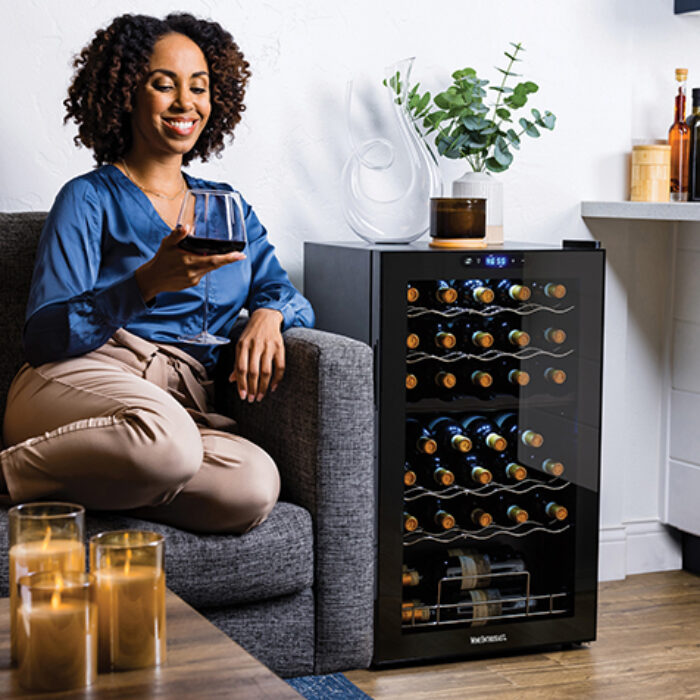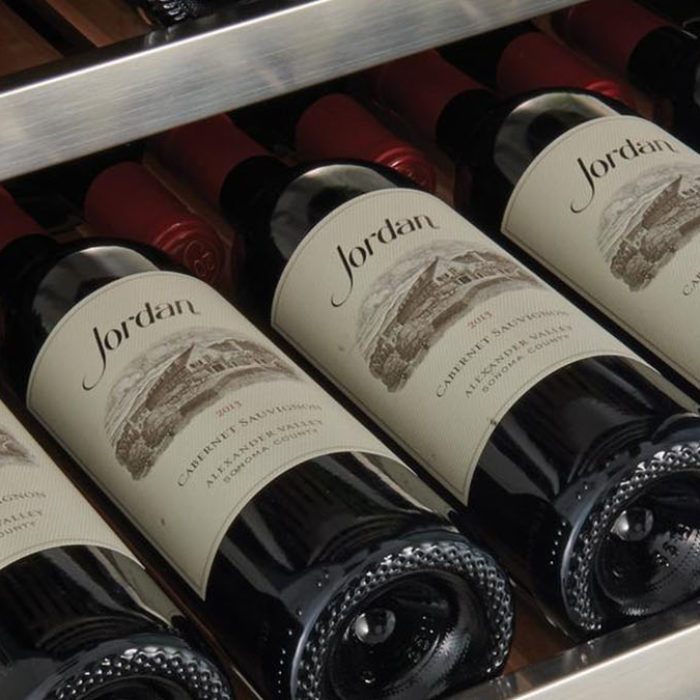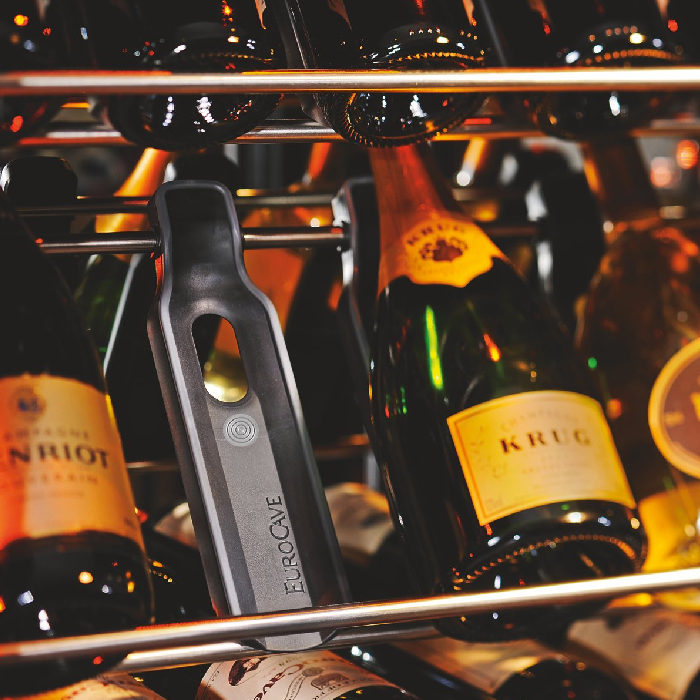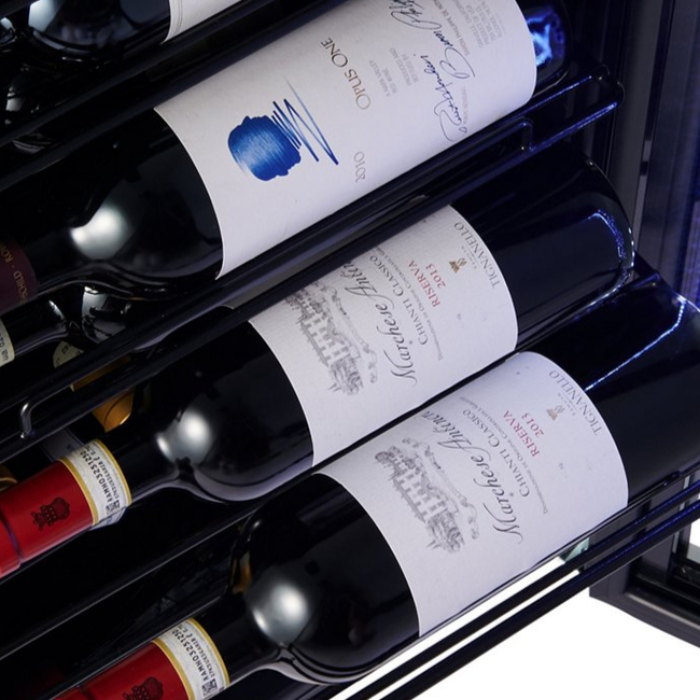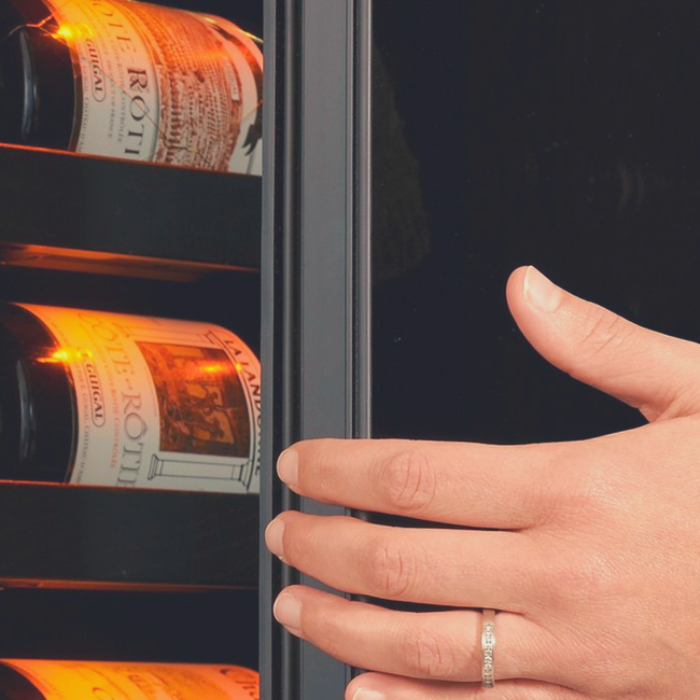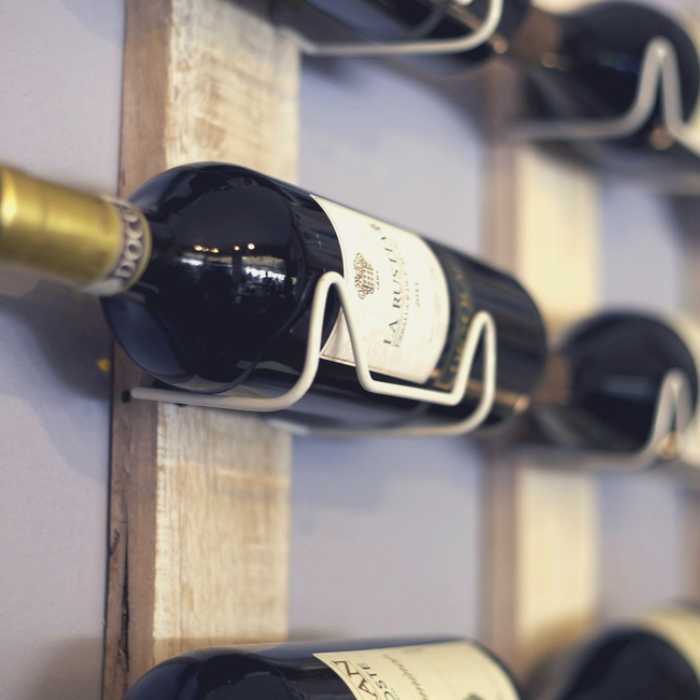There are a thousand and one places in your home that you could put a brand-new, freestanding wine refrigerator. As such, deciding where your cooler should go can seem like a big decision. A quality unit possesses both cutting-edge functionality and attractive design, expanding your options for storage and display. Is it better to stow your fridge alongside vintages in your cellar, or keep a few favorite bottles on-hand in the dining room? Can it go in the garage with a few six packs, or take up another outlet in the kitchen?
There are favorable and unfavorable locations for housing a wine refrigerator in the home. Here we’ll walk through some of the best – and worst – places to store your new unit.
THE BEST ROOMS TO PUT YOUR WINE COOLER IN
Kitchen
The kitchen is probably the most popular spot for a wine refrigerator in the home. It makes sense, practically speaking. Your wine is conveniently available to you and your guests, within an arm’s reach for pairing, cooking, or just enjoying on its own. Aesthetically, having a beautifully lit, well-stocked wine refrigerator makes for a great complement to a kitchen space. As well, because so many refrigerators come in countertop-friendly size options, finding a spare patch of real estate in the kitchen can be relatively easy.
From a design perspective, how you want to install your wine refrigerator depends on what needs you have. If your collection is still growing, a front venting built-in, under-counter refrigerator looks great in any modern kitchen. On the other hand, if you have a more robust collection, some upright, cellar-style refrigerators make for great showpieces.
There are a few considerations for putting a wine refrigerator in the kitchen, though! Space and clearance are two things to look out for. You may need to remove a kitchen cabinet or two to make room for your new refrigerator. As well, make sure to keep your unit away from any heat-generating appliances like dishwashers or ovens. The last thing your wine refrigerator needs is heat! One more tip: We suggest budgeting space between your cooking area and the fridge to avoid any traffic jams between wine enthusiasts and the chef.
Home Bar
The bar is another great, practical option for a wine refrigerator — especially if you’re someone who entertains often. Keeping a small unit in or around your home bar not only looks great, but its placement is logical. When it comes time to get the soiree started, your wine will be perfectly chilled and easily accessible, ready to serve.
A nice bar not only adds to your home on a practical level, it also can look fantastic. With a few proudly displayed bottles and some decorative glassware, your home bar can be the centerpiece for your entertaining. Whether you choose a compact unit, or something a little more show-stopping, a sleek, modern wine refrigerator is sure to look great alongside the rest of your well-equipped bar.
When looking at adding a wine refrigerator to your home bar, think about how you like to entertain. Do you take a ‘serve yourself’ approach, or do you prefer to play bartender throughout the night? Depending on who’s serving whom, you may want to move your unit a few steps away from your cocktail mixing/pouring area, just for convenience’s sake!
Dining Room
If wine typically comes with a meal for you, then perhaps consider installing a wine refrigerator in your dining room. This way, you or your guests can grab a bottle when needed, without having to get up and leave the room. As well, if you have an interest in wine pairings, this might just be the perfect spot for you. By keeping the unit in the same room as your meal, you can easily experiment with different accompaniments.
Unless you have a particularly spacious dining room, fitting a fully upright wine refrigerator might be tough. We’d suggest building into the wall directly, as it will save space and look seamless. A credenza-style unit can blend perfectly into your space as well, looking very much at home by a polished wood table or antique buffet. Be sure to look for at wine cellars that boast quietness as a feature – you won’t want a loud hum behind you at the dinner table!
The refrigerator door is going to need plenty of room to open and close, while still allowing guests enough space to get in and out of their seats. It can be tricky, but with the right dining room, it’s more than possible!
Keep in mind, these aren’t the only places to store your wine refrigerator. But, when we get asked for suggestions, these are our go-to picks. For us, the perfect wine refrigerator is just as beautiful as it is functional, so we never want to hide it out of sight.
PLAN WISELY WHEN PUTTING YOUR WINE COOLER HERE
Outdoor Patio
An outdoor patio is a popular place to entertain, and thus, a popular place for a wine refrigerator. However, the temperature of an outdoor area can fluctuate considerably, so you’ll need to keep that in mind when selecting your unit. There are plenty of machines specifically made and commercially rated for outdoor use — we definitely suggest looking into one of these, if you’re interested in a unit for your patio or porch.
Alternatively, if your home has an enclosed, air-conditioned patio, we advise setting up your wine refrigerator in an area of the room that receives shade.
Garage
The garage might seem like a no-brainer in terms of keeping cold drinks, but some machines are better equipped to work in this space than others. The lack of natural sunlight in a garage is a definite plus for your wine cooler, but the stale air and susceptibility to changes in ambient temperature can cause problems with units not designed to handle extreme climate fluctuations.
Eurocave wine cellars can handle the higher and lower ambient temperature ranges that most home garages experience, making them the best solution for wine storage here. To date, their brand is the only one that offers units that can function in colder environments down to 32 degrees. From the modestly sized Premiere S, to the cellar-style Premiere L, Eurocave certainly has something perfect for your garage.
Alternatively, if you live in a particularly warm climate, the Vinotheque by Wine Enthusiast is rated for temperatures over 90 degrees Fahrenheit. Simply put — there’s no shortage of options for garage-friendly units.
Another alternative to putting your wine fridge in the garage is turning instead to your basement. Basements offer the benefit of a cool, darkened setting while also allowing for greater climate control. If you’re feeling ambitious, a basement can be converted into a full-fledged wine cellar as your collection grows.
Bedroom
There’s nothing inherently wrong about putting your wine refrigerator in the bedroom, but this advice is for the light sleepers out there. While a wine refrigerator is far from loud, some people may have trouble sleeping with the light hum of a unit. If this is you, we’d suggest keeping your unit elsewhere.
As a rule of thumb, heat and light are going to be your ‘at all cost’ elements to avoid. Both can hinder your collection and force your unit to work much harder than it needs to. As well, make sure the unit has access to proper ventilation – you won’t want to force it to reuse stale air.
WHAT TO CONSIDER WHEN BUYING & BRINGING YOUR WINE COOLER HOME
Compressor vs Thermoelectric
Wine refrigerators generally fall into two categories: Compressor-based and thermoelectric. With a compressor, the unit uses the same principle as a typical refrigerator. That is, the machine cools air by pumping a chemical refrigerant through a set of coils. This results in a highly efficient, but slightly louder unit. They’re also going to need a little more space for ventilation.
With a thermoelectric unit, no chemicals are used. Through this method, the machine is completely silent, but cannot get as cold as compressor-based units. The thermoelectric unit is based on using the ambient air, so it may struggle in particularly warm climates.
Single Zone vs Dual Zone
The difference between a single zone and dual zone unit is fairly easy to grasp. In a single-zone unit, the entire refrigerator is the same temperature. On the other hand, dual-zone units have two separate temperature sections that can be adjusted independently.
Because all wine stores around the same temperature, we suggest dual zone only if you have a need for short term storage or service, necessitating the need for separate storage areas. Additionally, if you are interested in both long-term storage and serving wine a-la-minute, a dual-zone option may be worth considering.
Study Your Space
As with any home
appliance, you’ll want to measure the space available before deciding on and
making a purchase. We always suggest leaving a few inches of “wiggle
room” between your unit and the wall or other furniture. Unless it is a
front venting, built in wine cooler as most of those require less than an inch
of clearance if any at all. Don’t forget to account for the space required by
plugging into an outlet. As well, be sure you have ample room for both foot
traffic and the opening door of the unit itself!
Make sure to accurately assess what you need from your unit not just presently, but in the coming years. You may have 20 bottles now, but is that going to double or triple in the next year? We suggest buying not only for the present state of your collection, but also consider how ambitious your plans are! The last thing you want is a brand-new, already-overflowing wine refrigerator!
PARTING WORDS OF WISDOM
There’s no shortage of options for where to put your wine refrigerator. Each place may seem like an even better choice than the last, so we’re happy to help you sort it out! By keeping in mind a few specific pointers, you can find the absolute best spot in your household for a beautiful, brand-new unit.
Now that you’re equipped with the knowledge you need, a top-tier wine refrigerator is just a few clicks away! Whether you’re storing a dozen bottles of wine or two hundred, you’ll find models to fit every room and aesthetic. Take a look around our site, or chat with one of our many experts – we’re certain we have the cooler that fits your needs perfectly.



